Vincenzo Mancuso
On the Limit Performance of Floating Gossip
Feb 16, 2023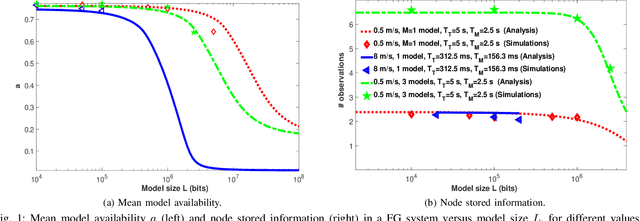
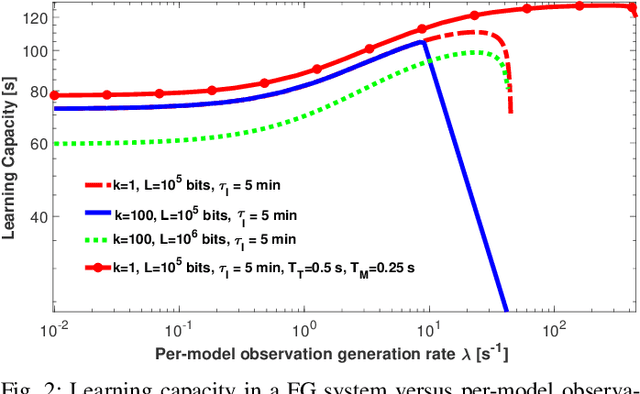
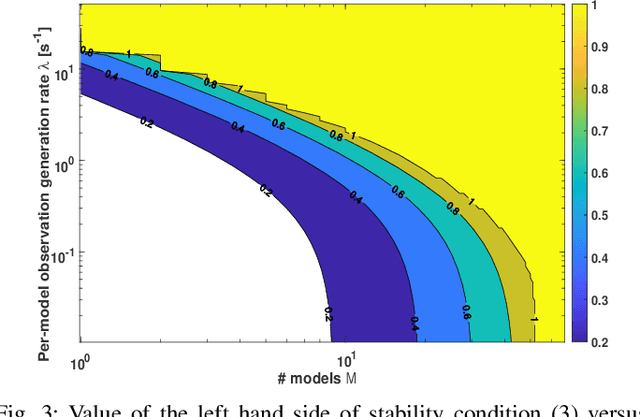
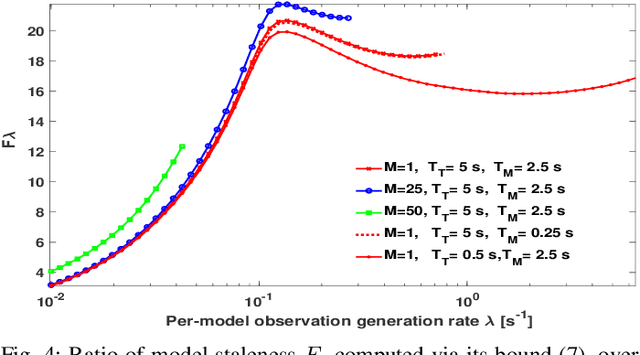
Abstract:In this paper we investigate the limit performance of Floating Gossip, a new, fully distributed Gossip Learning scheme which relies on Floating Content to implement location-based probabilistic evolution of machine learning models in an infrastructure-less manner. We consider dynamic scenarios where continuous learning is necessary, and we adopt a mean field approach to investigate the limit performance of Floating Gossip in terms of amount of data that users can incorporate into their models, as a function of the main system parameters. Different from existing approaches in which either communication or computing aspects of Gossip Learning are analyzed and optimized, our approach accounts for the compound impact of both aspects. We validate our results through detailed simulations, proving good accuracy. Our model shows that Floating Gossip can be very effective in implementing continuous training and update of machine learning models in a cooperative manner, based on opportunistic exchanges among moving users.
Fair Throughput Optimization with a Dynamic Network of Drone Relays
Jul 11, 2022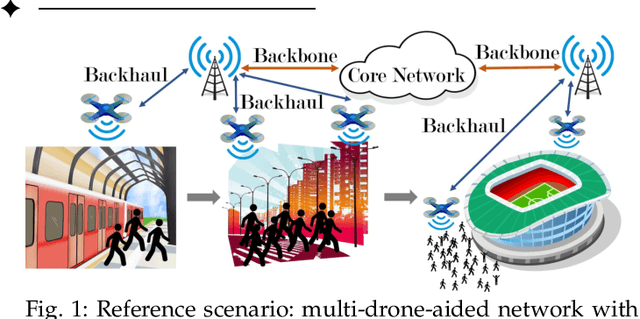
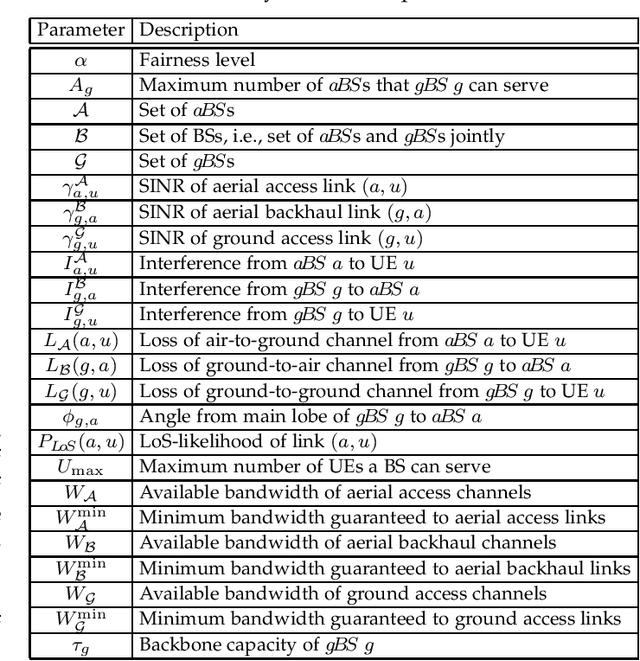
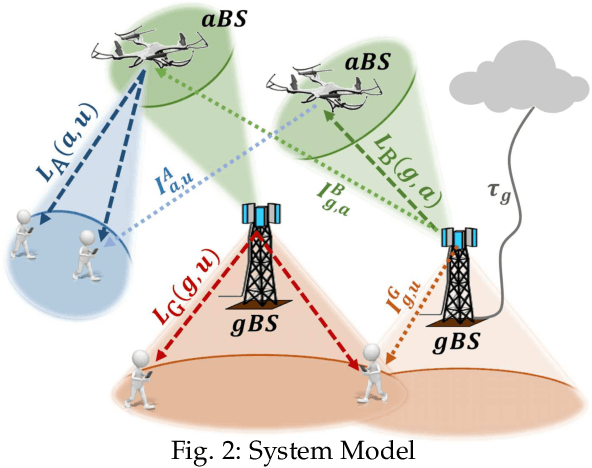
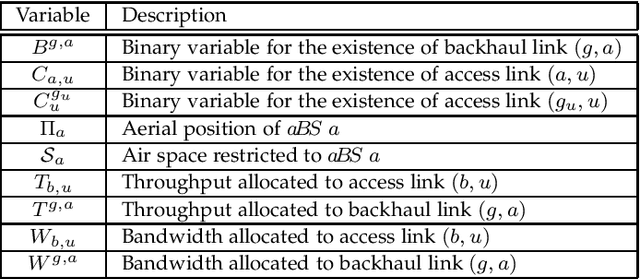
Abstract:Aiding the ground cellular network with aerial base stations carried by drones has experienced an intensive raise of interest in the past years. Reconfigurable air-to-ground channels enable aerial stations to enhance users access links by means of seeking good line-of-sight connectivity while hovering in the air. In this paper, we propose an analytical framework for the 3D placement of a fleet of coordinated drone relays. This framework optimizes network performance in terms of user throughput fairness, expressed through the {\alpha}-fairness metric. The optimization problem is formulated as a mixed-integer non-convex program, which is intractable. Hence, we propose an extremal-optimization-based algorithm, Parallelized Alpha-fair Drone Deployment, that solves the problem online, in low-degree polynomial time. We evaluate our proposal by means of numerical simulations over the real topology of a dense city. We discuss the advantages of integrating drone relay stations in current networks and test several resource scheduling approaches in both static and dynamic scenarios, including with progressively larger and denser crowds.
Optimizing UAV Recharge Scheduling for Heterogeneous and Persistent Aerial Service
May 25, 2022



Abstract:The adoption of UAVs in communication networks is becoming reality thanks to the deployment of advanced solutions for connecting UAVs and using them as communication relays. However, the use of UAVs introduces novel energy constraints and scheduling challenges in the dynamic management of network devices, due to the need to call back and recharge, or substitute, UAVs that run out of energy. In this paper, we design UAV recharging schemes under realistic assumptions on limited flight times and time consuming charging operations. Such schemes are designed to minimize the size of the fleet to be devoted to a persistent service of a set of aerial locations, hence its cost. We consider a fleet of homogeneous UAVs both under homogeneous and heterogeneous service topologies. For UAVs serving aerial locations with homogeneous distances to a recharge station, we design a simple scheduling, that we name HORR, which we prove to be feasible and optimal, in the sense that it uses the minimum possible number of UAVs to guarantee the coverage of the aerial service locations. For the case of non-evenly distributed aerial locations, we demonstrate that the problem becomes NP-hard, and design a lightweight recharging scheduling scheme, PHERR, that extends the operation of HORR to the heterogeneous case, leveraging the partitioning of the set of service locations. We show that PHERR is near-optimal because it approaches the performance limits identified through a lower bound that we formulate on the total fleet size.
SQLR: Short Term Memory Q-Learning for Elastic Provisioning
Sep 12, 2019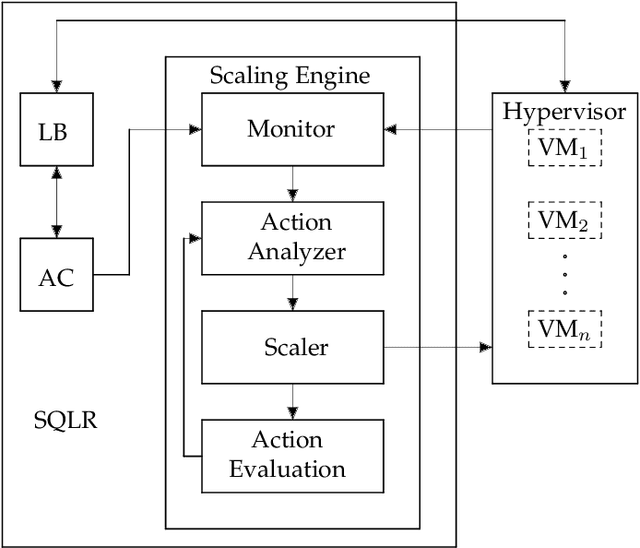
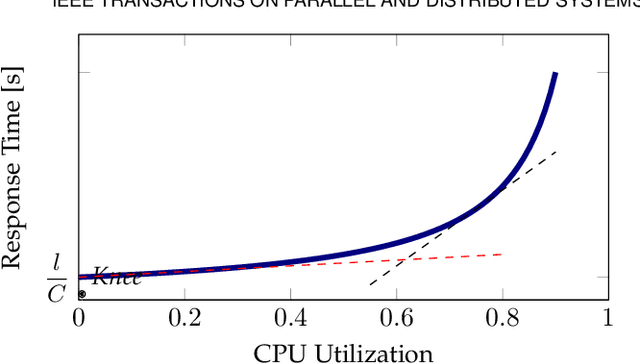
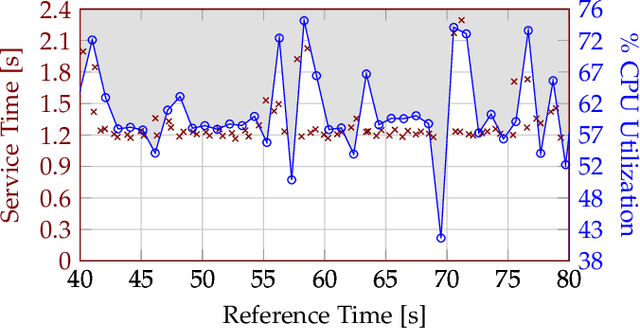
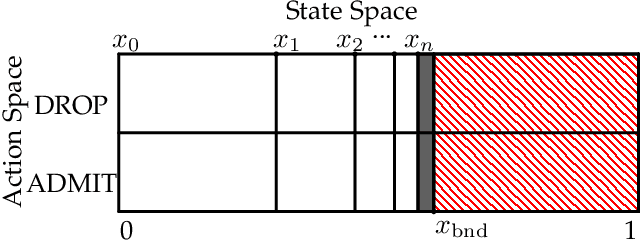
Abstract:As more and more application providers transition to the cloud and deliver their services on a Software as a Service (SaaS) basis, cloud providers need to make their provisioning systems agile enough to deliver on Service Level Agreements. At the same time they should guard against over-provisioning which limits their capacity to accommodate more tenants. To this end we propose SQLR, a dynamic provisioning system employing a customized model-free reinforcement learning algorithm that is capable of reusing contextual knowledge learned from one workload to optimize resource provisioning for different workload patterns. SQLR achieves results comparable to those where resources are unconstrained, with minimal overhead. Our experiments show that we can reduce the amount of resources that need to be provisioned by almost 25% with less than 1% overall service unavailability due to blocking, and still deliver similar response times as an over-provisioned system.
A Novel Hyperparameter-free Approach to Decision Tree Construction that Avoids Overfitting by Design
Jun 04, 2019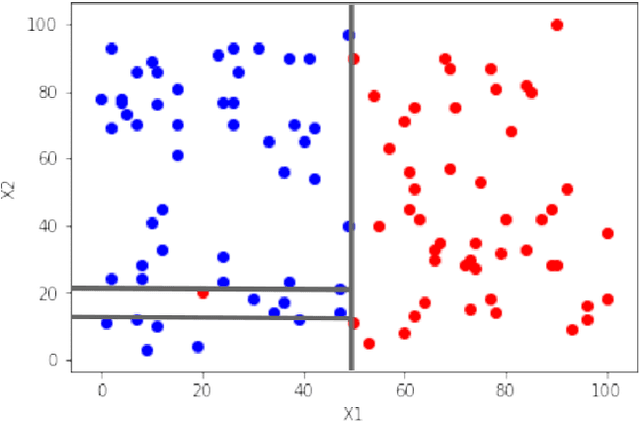
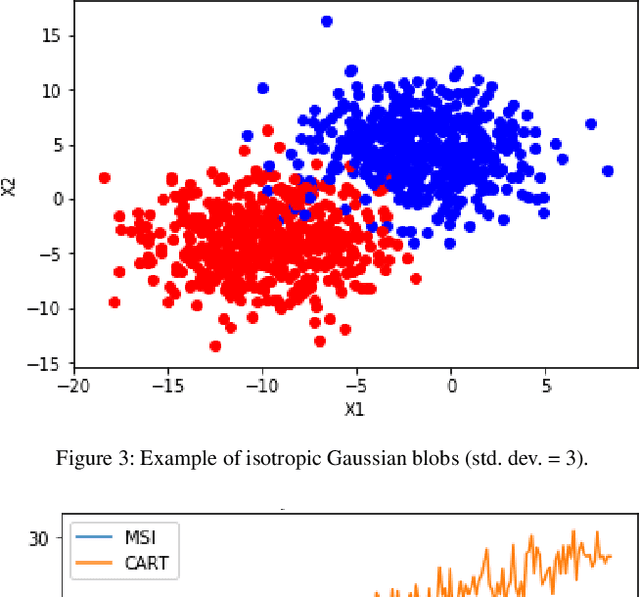
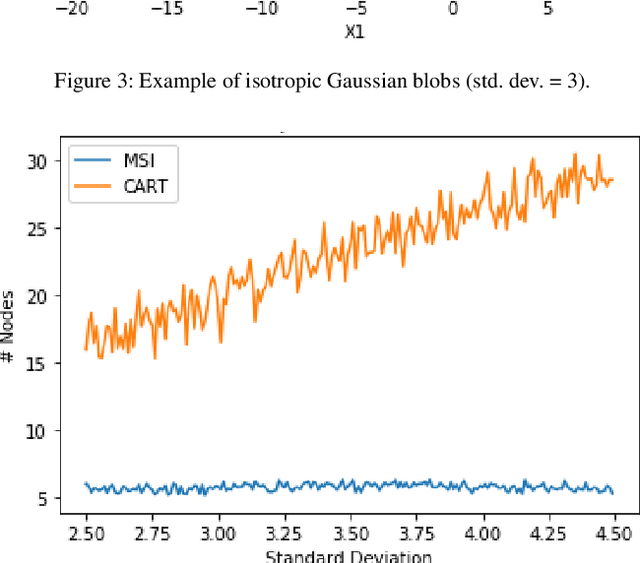
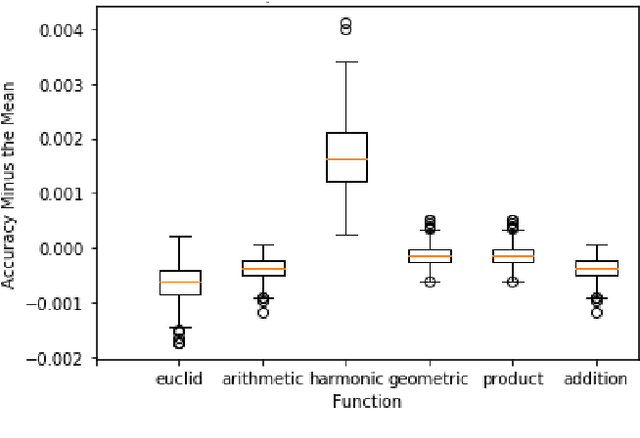
Abstract:Decision trees are an extremely popular machine learning technique. Unfortunately, overfitting in decision trees still remains an open issue that sometimes prevents achieving good performance. In this work, we present a novel approach for the construction of decision trees that avoids the overfitting by design, without losing accuracy. A distinctive feature of our algorithm is that it requires neither the optimization of any hyperparameters, nor the use of regularization techniques, thus significantly reducing the decision tree training time. Moreover, our algorithm produces much smaller and shallower trees than traditional algorithms, facilitating the interpretability of the resulting models.
 Add to Chrome
Add to Chrome Add to Firefox
Add to Firefox Add to Edge
Add to Edge